
Xplor reconnects kids to nature and helps them find adventure in their own backyard. Free to residents of Missouri.
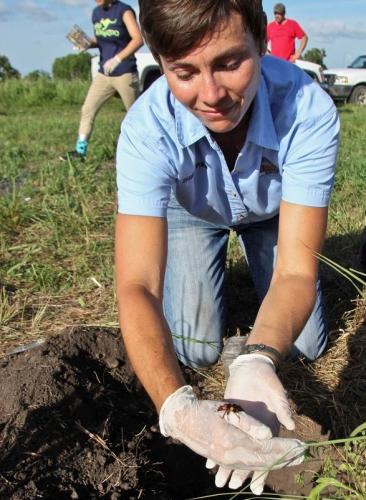
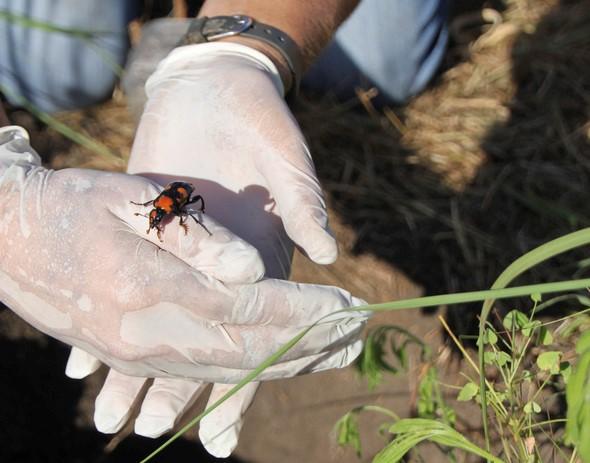
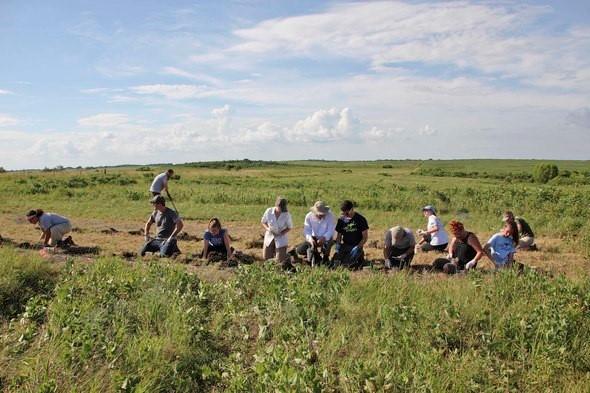
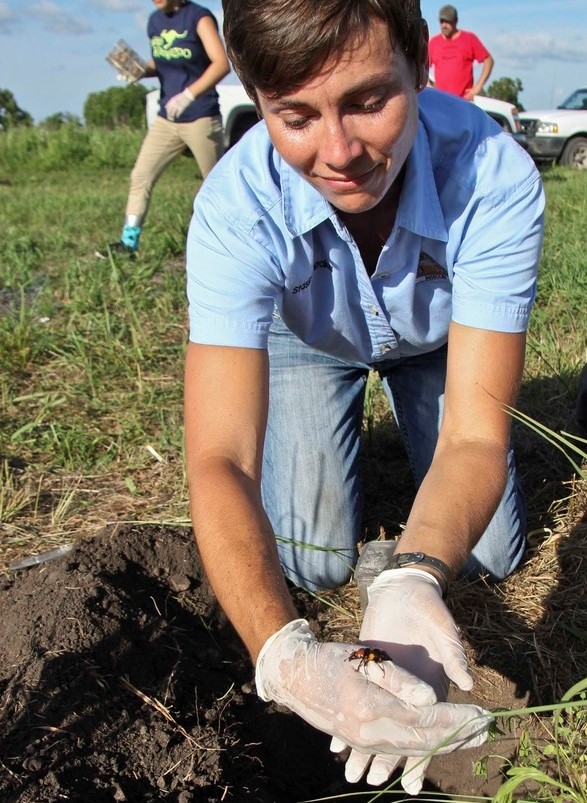
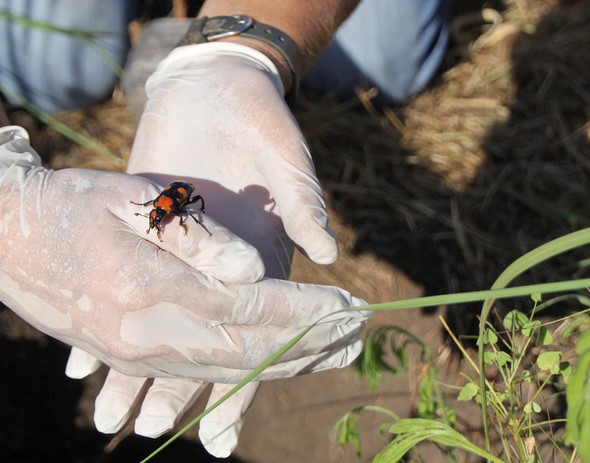
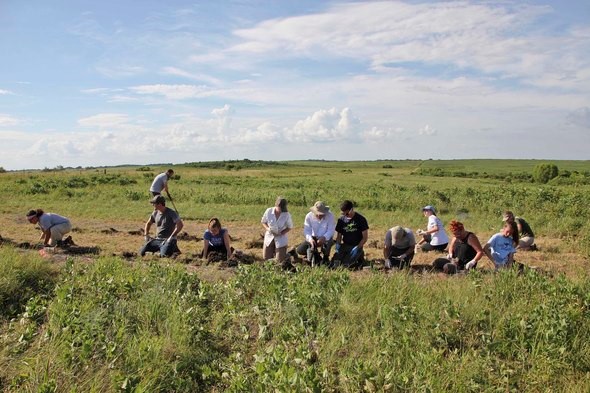
El Dorado Springs, Mo. – The American burying beetle has rare traits for an insect. Mated pairs tend their young grub worm larvae. They feed the youngsters on dead quail or other carrion they’ve embalmed and entombed underground. Mites that feed on fly larvae mysteriously know when it’s time to jump on an adult beetle leaving the nest site, the mites counting on the beetle’s search for new carrion carrying them to fresh maggots. Yet despite unusual skills, the sizeable two-inch burying beetles are federally endangered for reasons science doesn’t fully understand.
However, the black beetles with bright orange markings are making a comeback and helping scientists understand their role in ecology at Wah’ Kon-Tah Prairie Conservation Area in west central Missouri. On June 19, the Saint Louis Zoo completed the seventh annual release at the prairie of American burying beetles raised at the zoo. The project is a partnership between the zoo, the Missouri Department of Conservation (MDC), The Nature Conservancy, and the U.S. Fish and Wildlife Service.
“We’re finding good numbers of overwintered beetles, which is very meaningful to me,” said Bob Merz, who directs the Saint Louis Zoo WildCare Institute Center for American Burying Beetle Conservation.
The beetle project is part of Merz’s broader work with invertebrate species and the zoo’s mission to enhance species conservation worldwide. He studied and propagated them for years and was thrilled when the first release of zoo-raised beetles occurred at Wah’ Kon-Tah in 2012. They were noted in Missouri in the 1970s and originally found in 35 states. But when American burying beetles were placed on the federal endangered species list in 1989, the only known population was in Rhode Island. Since then, populations have been found in six states, including some of Missouri’s neighbors.
Zoo-raised and released beetles are considered a non-essential, experimental population under federal endangered species rules. There are no restrictions on land uses for the prairie or neighboring private farms. The beetles do not affect crops or livestock.
One goal at Wah’ Kon-Tah is to establish a self-sustaining population of American burying beetles. Success there could provide a model for releasing the beetles at other sites. Biologists found adult beetles in traps baited with carrion in late May, and another 30 were found in June following an earlier release. Some beetles overwinter as adults. Others are adults that have emerged from the pupae stage. Released zoo beetles or those captured in traps on the prairie receive specific markers such as small tags or a notched wing cover. That gives researchers evidence of population trends.
“They’re surviving, and that’s big,” Merz said. “They’re finding carrion and bringing forth young that are surviving.”
Wah’ Kon-Tah, owned by The Conservancy and managed by MDC, makes a good site because as unplowed prairie it has tremendous plant diversity. Diverse plants lead to diversity among insects and the birds and small mammals that feed upon them. Thus, the burying beetles have good access to the other insects they feed upon as well as carrion from small animals.
Burying beetles play a role in prairie ecology. They help clean dead critters from the prairie. The beetles as adults or larvae can also be eaten by other prairie species. At Wah’ Kon-Tah they’re also serving the science of prairie ecology. Data gathered about their numbers and habits will be combined with other studies such as songbird or quail surveys, insect monitoring, and habitat management practices.
“What we’re looking for is what a restored American burying beetle population on the prairie looks like,” Merz said.
The project will continue for years to come so scientists have a good data base.
On June 19, zoo staff, volunteers, and MDC staff released 105 pairs of zoo-raised beetles at three different locations at Wah’ Kon-Tah. Crews dug sod plugs, put a dead pen-raised quail in the hole along with a male and female beetle, and replaced the sod plug. The crews included teens from the Zoo Alive volunteer program in St. Louis, and staff members from the Sedgwick County Zoo in Wichita, Kan.
Wild beetle pairs dig their own holes and burying themselves with carrions. They strip the carcass into meatballs they preserve with secretions. Beetle pairs mate and the female lays eggs. When those eggs hatch into little larval grub worms, the adults will feed them. They rub their wings together to make a sound that calls the youngsters to dinner. After a few weeks, females punch holes in the walls of the underground chamber and the grubs burrow off to enter the pupae stage. About 45 to 60 days later, they emerge as adult beetles, ready to continue to cycle.
The beetles are worth saving because they’re so unique, and they have a role in ecology. But studying the beetles is way to also study the natural systems that support people.
“This species existed in my lifetime in my state, and now we can’t find them anywhere,” Merz said. “It tells me something’s happening in my ecosystem.”
For more on the American burying beetle restoration, visit https://nature.mdc.mo.gov/discover-nature/wildlife-restoration/american-burying-beetle-restoration